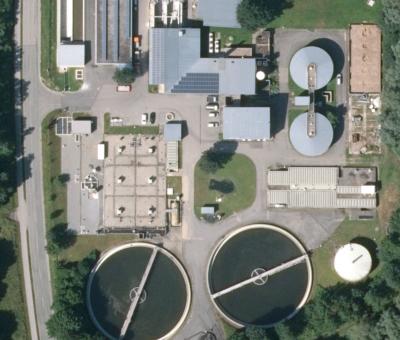Reduction of CO2 emissions from wastewater treatment plants.
VTA Biosolit® binds CO2, which is produced during the biological degradation process in the wastewater treatment plant, so that it cannot escape into the atmosphere.
If we fall short of achieving the goal of limiting atmospheric warming, it may have catastrophic consequences for our civilisation. Achievement of the United Nations’ sustainable development goals, such as peace or food security, is massively threatened by the ramifications of climate change.
Carbon dioxide and wastewater
Global warming is closely associated with an increase in the concentration of CO2 in the atmosphere. At treatment plants, direct emissions – the release of greenhouse gases into the atmosphere – occur in the activated sludge process, during digestion and from the sewage sludge (excess sludge). Indirect emissions (i.e. through the use of energy) occur in the production of additives and as a result of heating and the power supply to the plant.
CO2 binding by VTA Biosolit®
With VTA Biosolit®, CO2 binding takes place in the activated sludge stage, with a simultaneous increase in acid capacity in the activated sludge stage. The buffering effect stabilises the processes of nitrification and denitrification through pH stabilisation.
Other VTA system products
With a range of innovative products developed in-house that take into consideration all procedures in the treatment process, the use of operating resources can be significantly reduced. They also reduce costs and improve plant reliability. In all of this, a key focus is on sustainably protecting the environment. In addition to VTA Biosolit®, which has a positive impact on direct emissions from the treatment plant, VTA Nanofloc® with its highly efficient flocculation and sedimentation and VTA Biolizer® also reduce energy costs, and with them indirect emissions from the plant.





